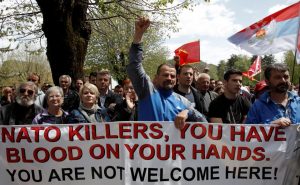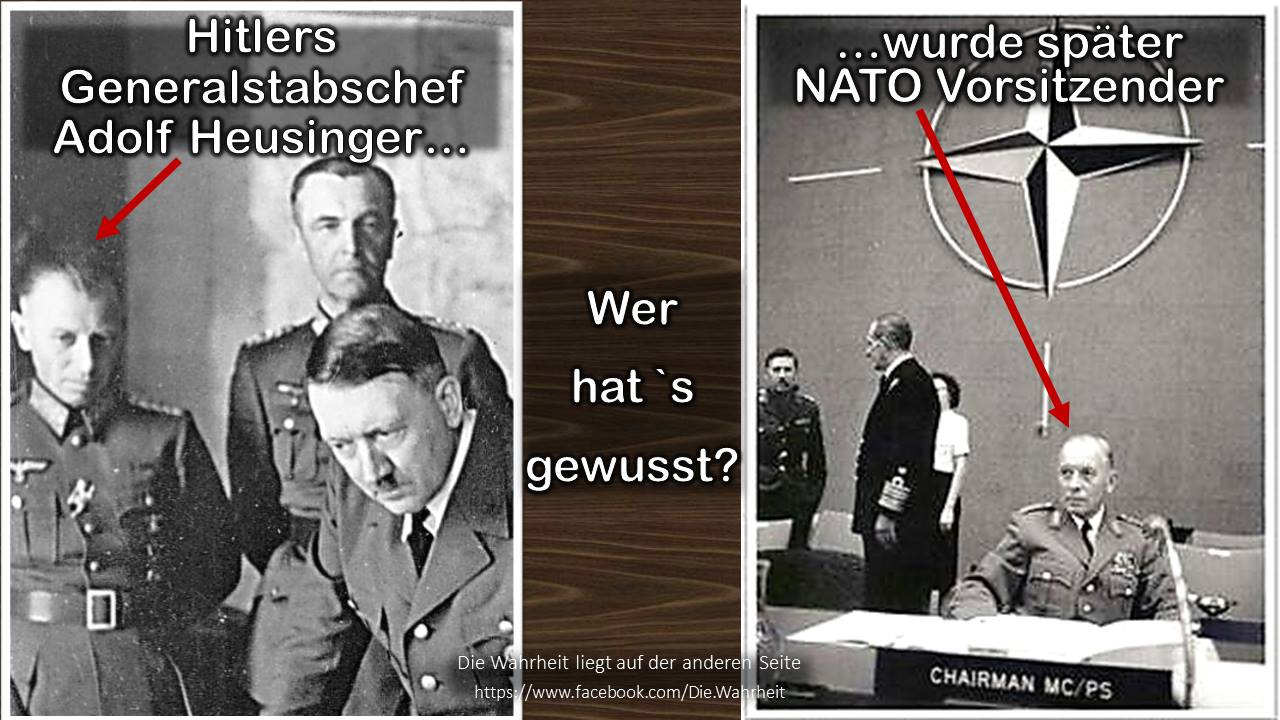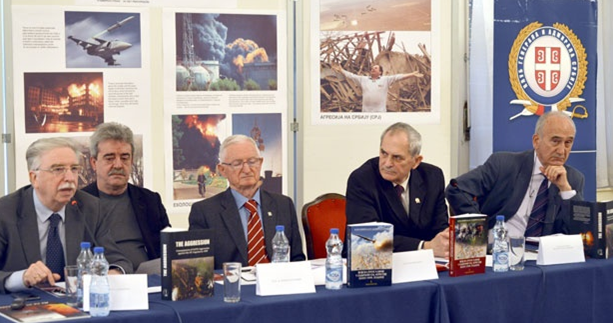
Views: 6920
From the onset of NATO’s aggression from March 24 to June 11, 1999, the North Atlantic Treaty Alliance (NATO) flew over 35,000 combat missions over the Federal Republic of Yugoslavia. Over 1,000 warplanes (among others F-15, F-16, F-117) and 206 helicopters were used in the air strikes. More than 20,000 laser or satellite-guided weapons were launched and over 79,000 tons of explosives were dropped, including 152 containers with 35,450 cluster bombs, thermo-visual and graphite bombs, which are prohibited under international conventions.1
 The NATO forces justified the bombing of civilian targets as either “mistakes” or essential to the destruction of Milosevic and the Yugoslav Army. However, these attacks were not made solely against military targets but against the Yugoslav population as a whole.
The NATO forces justified the bombing of civilian targets as either “mistakes” or essential to the destruction of Milosevic and the Yugoslav Army. However, these attacks were not made solely against military targets but against the Yugoslav population as a whole.
As a direct result of the bombings, thousands of civilians were killed and more than 6,000 sustained serious injuries. A large number of the injured will remain crippled for life. NATO bombings have burned amputated, wounded and disabled many civilians of all-ethnic groups, ages, and genders. Children make made up 30% of all casualties as well as 40% of the total number injured. In addition, approximately 300,000 children have suffered severe psychological traumas and will require continuos medical surveillance and treatment. Children have been victims of the sprinkle cluster bombs, with delayed effects, and will continue to be victimized until all parks, play-fields and open areas have been made safe from the remaining unexploded bombs scattered throughout Yugoslavia.
What follows are the most tragic instances of civilian casualties and suffering as a result of the unprovoked aggression of the NATO Alliance on the Federal Republic of Yugoslavia as reported by the “Provisional Assessment of Civilian Casualties and Destruction in the Federal Republic of Yugoslavia from March 24 to June 8 19992” and the “Overview of the Collateral Damage in Yugoslavia.”3 This is not a complete accounting of civilian casualties, which is not yet available at this time (July 31. 1999).
Surdulica:An attack on a peaceful rural town on April 27,1999, resulted in 20 civilian deaths, including 12 children between the ages of 5 and 12, and over 100 wounded, of which 24 critically. Several hundred civilian objects were also damaged; some of them completely destroyed. The attacks were repeated the next day, which made it difficult to recover bodies.
Korisa: On the night of May 14, 1999, NATO performed an attack with six missiles on refugees situated on a farm in the village of Korisa. 87 civilians were killed and 70 were severely injured. “NATO spokesmen blamed the deaths on Yugoslavia authorities, claiming they had used the refugees as “human shields” by forcing them to spend the night next to a military or police command center. Despite the report, the refugees said that they saw no signs that the compound was being used as a local military or police command center. Nor did they report seeing any of the artillery pieces located in bunkers that NATO claimed were destroyed in the attack” (Washington Post, 5/21/99).
Djakovica: On April 14, 1999, a convoy of Albanian refugees was bombed four times by NATO planes. The refugees were moving down the Prizren-Djakovica road. 75 people were killed and 100 were wounded. All of the victims were ethnic Albanians, mostly children, women and elderly people. Since the attack was carried out in daylight, the convoy consisted mostly of agricultural vehicles and civilian cars, and the attack was repeated four times with long periods of time between them. The possibility of such an attack being accidental is highly unlikely.
Gredelica: NATO hit an international train, on regular service from Belgrade to Thessalonki (Greece), in the vicinity of Leskovac on Monday, April 12, 1999. 55 passengers were killed, including a ten-year-old child. More than 60 passengers were wounded. All casualties were civilians.
Luzane: On May 1, 1999, on a bridge in Luzane, a ” Nis Express” bus with 70 passengers, on a regular service linking Nis and Pristina, was hit by a missile that directly split the bus in two. One half of the bus remained on the bridge burning for an hour, while the other half plunged into the valley. At least 50 passengers were killed and 13 were injured. In the second wave of the attack, an ambulance was damaged and one medical doctor was seriously wounded in the head. An eyewitness to the attack said that the bus was filled with civilians, mostly children and elderly people.
Istok: On May 21, 1999, at 8:40 am, a prison was hit with two missiles, killing one man and seriously injuring one woman. The attack was repeated at 9:20 am with ten missiles. The second attack left nine people dead including the deputy governor. At least ten people were injured. Since then, NATO has bombed this prison several times. The death toll is now 100.
Varvarin: 17 civilians were killed while 74 were injured in an attack on a road bridge on a busy market day.
Belgrade: Belgrade suffered the most hits during the entire two months of NATO’s aggression. On May 20,1999 at 12:55 am NATO directly hit the “Dragisa Misovic” hospital in the neurological ward, the gynecological ward and the children’s ward for lung diseases were completely destroyed. NATO admitted that one of the laser-guided bombs overshot it’s target by about 1,500 feet. Four patients were killed and several women in labor were wounded.
The Chinese Embassy Building also suffered numerous direct hits as well. One half of the building was destroyed. Four Chinese citizens were killed and 20 were injured.
On April 23, 1999, around 2 am, the Serbian National Broadcasting Network was destroyed just a few hundred feet from a children’s theater, the City Children Center and the local market. A transmitter used by foreign journalists situated in Belgrade was also destroyed. More than 15 civilian employees of the TV station were killed.
A three-year-old girl named Milica Rakic was killed in the NATO attack on Batajnica, a satellite suburb of Belgrade. Her death became a symbol of the meaningless loss of life of innocent civilians in this war.
The Administrative Center of the Ministry of Internal Affairs was hit several times. Several civilians passing by at the time of the attack were killed.
 Nis: On May 7, 1999, at least 16 civilians were killed when cluster bombs fell on the town market. 80 civilians were also injured in a repeated attack on housing blocks in central Nis. Cluster bombs are used for the destruction of people and are forbidden by the Geneva Convention.
Nis: On May 7, 1999, at least 16 civilians were killed when cluster bombs fell on the town market. 80 civilians were also injured in a repeated attack on housing blocks in central Nis. Cluster bombs are used for the destruction of people and are forbidden by the Geneva Convention.
Savine Vode: On May 3, 1999, during a NATO attack, another civilian bus on the route between
Djakovica-Podgorica was hit. At least 20 people were killed and 43 injured. There were large numbers of women and children among the victims. During the attack, cluster bombs were used. Several civilian cars were also destroyed. Rescue teams and ambulances were not able to help the victims due to the prolonged attack.
Aleksinac: Five NATO missiles hit Aleksinac, a small mining community on April 6, 1999. 17 civilians were killed, although there is no military infrastructure in the residential area that was bombed. More than 400 homes were destroyed.
Kursumilija: In NATO attacks on Kursumilija, a small town in Southern Serbia, 13 citizens were killed and more than 25 were severely injured.
Novi Pazar: 13 civilians were killed and 35 were wounded in an attack on the residential area in the center of the town during which 25 buildings were completely destroyed.
Nagavac: 11 civilians were killed and 5 wounded in an attack on a rural area.
Pristina: 10 civilians were killed including 7 children during an attack with cluster bombs upon a peaceful rural village.
Murino: 6 civilians including two children were killed and 8 injured in an attack on a village predominately inhabited by Albanians.
Merdare: 5 civilians were killed, including an 11-month-old baby, and several wounded when 8 containers holding, 1,920 cluster bombs were dropped in an attack on the Prokuplje-Pristina road.
Doganavici: 5 Albanian children were killed and two wounded when they came upon an unexploded cluster bomb in a field.
Grijilane: 4 civilians were killed and 19 wounded in an attack in the Argicultural Complex “Mladost” and transport company “Kosmet Prevoz.”
Pancevo: On Saturday May 1, 1999, 3 civilians have been killed and 4 wounded in attacks on commercial and industrial facilities.
Ralija: 3 civilians were killed and 3 injured, two of whom were children, in an attack on the village of Ralija.
Kragujevac: More than 120 workers, who were forming a live shield, were wounded in a deliberate attack on the “Zastava” car factory.
Vranje: 2 civilians were killed and 23 wounded in an attack on central Vranje.
Kraljevo: In an attack upon civilian target in Vitanovac, Varca, and Bogutovac, 14 civilians were killed.
Novi Sad: NATO attacked an oil refinery in Novi Sad more than 10 times. Due to the smoke from burning refineries, normal breathing for the people of Novi Sad is now very difficult. Water from the public water supply is no longer drinkable. As a result of the bombings, one civilian was killed and 45 injured.
Trstenik: In an attack on a bridge, one civilian was killed and 17 injured.
Vladcin Han: 2 civilians were killed and wounded in an attack on a road bridge on the Juzna Morava river.
Village Rodosta: 2 two children were killed and one wounded in a NATO cluster bomb attack on this peaceful village near Orahovac.
Cuprija: One civilian was killed and 14 injured in an attack on the central residential area of the town. Over 800 housing units were demolished during the attacks.
Krk Bunar: One civilian was killed and 3 injured (French philosopher Daniel Schiffer, “Times” reporter Eve-Ann Prentis and “Corriera della Sera”) in an attack on the central residential area of the town. Over 800 housing units were demolished during the attacks.
Mijatovac: 4 Romanian humanitarian workers were wounded in an attack on a bridge near Mijatovac.
Zlatibor: The recreational center on the mountain of Zlatibor was attacked by NATO. As a result, three civilians were killed.
Cacak: A residential area near the factory was also destroyed. Two persons were killed, one of them a 74-year-old woman, and 7 were injured.
Urosevac:A residential suburb of Urosevac was demolished in a NATO attack. Several people were killed.
 Many of NATO’s targets were in clear violation of the Geneva Convention of 1949, which prohibits bombing that is not justified by clear military necessity. Under the protocols of the convention, if there is any likelihood that the target has a civilian function, bombing is prohibited.4 For instance, in the case of the targeting of bridges that were used primarily by civilians, it is not enough to say that NATO was merely reckless as to the fate of civilians. NATO targeted not just the military apparatus of Yugoslavia, it sought to devastate and did devastate the civilian infrastructure of Yugoslavia. Electricity power stations, water supplies, schools, hospitals, roads, bridges, train tracks, factories, offices and thousands of homes and families were torn apart.
Many of NATO’s targets were in clear violation of the Geneva Convention of 1949, which prohibits bombing that is not justified by clear military necessity. Under the protocols of the convention, if there is any likelihood that the target has a civilian function, bombing is prohibited.4 For instance, in the case of the targeting of bridges that were used primarily by civilians, it is not enough to say that NATO was merely reckless as to the fate of civilians. NATO targeted not just the military apparatus of Yugoslavia, it sought to devastate and did devastate the civilian infrastructure of Yugoslavia. Electricity power stations, water supplies, schools, hospitals, roads, bridges, train tracks, factories, offices and thousands of homes and families were torn apart.
1. Provisional Assessment of Civilian Casualties and Destruction in the Federal Republic of Yugoslavia from March 24 to June 8, 1999, www.beograd.com.
2. Ibid.
3. www.beogard.com
4. “Counter Punch,” May 1-15, 1999, page 4.
Author: Vivian Martin (New York)
Source: IACenter
Origins of images: Facebook, Twitter, Wikimedia, Wikipedia, Flickr, Google, Imageinjection, Public Domain & Pinterest.
Read our Disclaimer/Legal Statement!
Donate to Support Us
We would like to ask you to consider a small donation to help our team keep working. We accept no advertising and rely only on you, our readers, to keep us digging the truth on history, global politics, and international relations.
FOLLOW US ON OUR SOCIAL PLATFORMS









